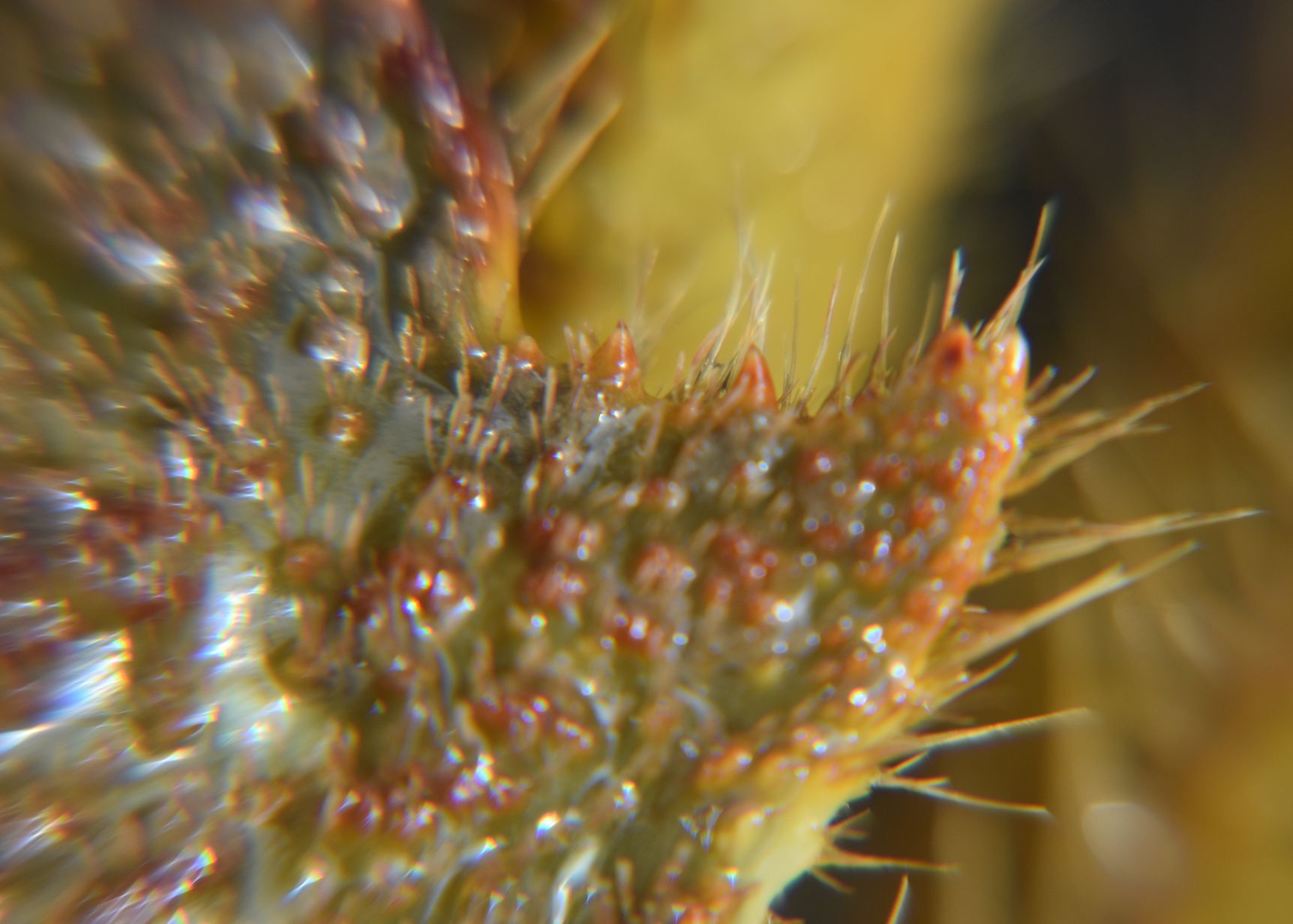Telmessus cheiragonus (Tilesius, 1812 or 1815)Common name(s): Helmet crab, Horse crab, Bristly crab |
|
| Synonyms: Cancer cheiragonus, Telmessus serratus |  |
| Phylum Arthropoda
Subphylum Crustacea Class Malacostraca Subclass Eumalacostraca Superorder Eucarida Order Decapoda Suborder Pleocyemata Infraorder Brachyura (true crabs) Section Eubrachyura Family Cheiragonidae |
|
| Telmessus cheiragonus male, 9.5 cm carapace width, from Padilla Bay. | |
| (Photo by: Dave Cowles July 2005) | |
Family Cheiragonidae: Carapace subhexagonal to longitudinally subrectangular, with lateral margins curved (arcuate). Second antennae folding longitudinally or nearly so. Square mouthparts. Males have 6 pleonite (abdominal) segments and telson free and a pointed telson. Genus Telmessus was formerly placed in Family Atelecyclidae (Poore and Ahyong, 2023).
Genus Telmessus (helmet crabs): Carapace broader than long, pentagonal. The lateral margins of the carapace have compound teeth. The walking legs do not have spines. (Poore and Ahyong, 2023)
How to Distinguish from Similar Species: This is the only common shallow member of Family Cheiragonidae in this area, and the only local species with a 5-sided carapace.
Geographical Range: Bering Sea to California, and to Siberia, Japan, and Korea. Not common on our coast south of Washington.
Depth Range: Intertidal to 110 meters. Mostly subtidal.
Habitat: Eelgrass, algae, soft bottoms, sometimes on rocky bottoms.
Biology/Natural History:
This species is
mostly subtidal but can be found in the eelgrass at very low tides at Padilla
Bay. It can bury itself in the sediment. Eats a variety of food,
such as eelgrass, eelgrass detritus, snails, algae, worms, and bivalves.
Predators include sea otters and fur seals, the rosylip sculpin (Aschelichthys
rhodorus), and gulls, which catch them in eelgrass beds at low tide,
flip them over, and eat their insides. Comes to intertidal algae-covered
rocks in spring or early summer for mating, which occurs just after the
female molts. In Hokkaido, Japan, mating occurs in May and June (Nagao
and Munehara, 2003). Nagao and Munehara (2007) found that in Japan
adult females of this species store sperm from one mating season to the
next. Females isolated from males during a mating season nevertheless
laid fertile eggs by fertilizing them with sperm stored from the previous
season.
| Return to: | |||
| Main Page | Alphabetic Index | Systematic Index | Glossary |
References:
Dichotomous Keys:Coffin, 1952
Flora and Fairbanks, 1966
Hart, 1982
Kozloff 1987, 1996
General References:
Harbo,
1999
Gotshall,
1994
Gotshall
and Laurent, 1979
Jensen,
1995
Johnson
and Snook, 1955
McConnaughey
and McConnaughey, 1986
Niesen,
1997
O'Clair
and O'Clair, 1998
Sept,
1999
Scientific Articles:
Burnett, Nicole, 2024: A practical identification guide to the zoeae of the invasive European green crab, Carcinus maenas (Linnaeus, 1758) (Decapoda: Brachyura: Carcinidae), and to the zoeae of the families of brachyuran crabs in Washington state, USA. Journal of Crustacean Biology 44:4. doi.org/10.1093/jcbiol/ruae064
Kamio, M., Araki, M., Nagayama, T., Matsunaga, S. & Fusetani, N. 2005. The Antennular Outer Flagellum is the Site of Pheromone Reception in the Male Helmet Crab Telmessus cheiragonus. Biol. Bull. 208: 12-19.
Kamio, M., Matsunaga, S. & Fusetani, N. 2003. Observation on the Mating Behaviors of the Helmet Crab Telmessus cheiragonus (Brachyura: Cheiragonidae). J. Mar. Biol. Assoc. U.K. 83: 1007-1013.
Kamio, M., Matsunaga, S. & Fusetani, N. 2000. Studies on sex pheromones of the helmet crab, Telmessus cheiragonus 1. An assay based on precopulatory mate-guarding. Zool. Sci. 17: 731-733.
Kamio, M., S. Matsunaga, and N. Fusetani, 2002. Copulation pheromone in the crab Telmessus cheiragonus (Brachyura: Decapoda). Marine Ecology Progress Series 234: 183-190
Kamio, Michiya, Hiroki Osada, and Hirona Yano, 2021. Morphological and behavioral indicators of reproductive premolt females of the helmet crab Telmessus cheiragonus. Fisheries Science 87: pp. 331-337
Nagao, J., 1999. Growth and reproduction of the helmet crab Telmessus cheiragonus. Ph.D. dissertation, Hokkaido University, Hakodate, Japan
Nagao, J. and H. Munehara, 2001. Annual reproductive cycle of the helmet crab Telmessus cheiragonus on the sublittoral zones in Usujiri, southern Hokkaido, Japan. Crustacean Research 30: 72-81
Nagao, J. and H. Munehara, 2003. Annual cycle of testicular maturation in the helmet crab Telmessus cheiragonus. Fisheries Science 69: 1200-1208
Nagao, Jiro and Hiroyuki Munehara, 2007. Characteristics of broods fertilized with fresh or stored sperm in the helmet crab Telmessus cheiragonus. Journal of Crustacean Biology 27:4 565-569
Vincent, T.L.S., D. Scheel, and K.R. Hough, 1998. Some aspects of diet and foraging behavior of Octopus dofleini (Wulker, 1910) in its northernmost range. Marine Ecology 19: 13-29
Yano, Hirona, Michiya
Kamio, and Hiroshi Nagai, 2016. The molting biomarker metabolite N-acetylglucosamine
-1,5 lactone in female urine of the helmet crab Telmessus
cheiragonus. Biological Bulletin 230:2 p 143-151
General Notes and Observations: Locations, abundances, unusual behaviors:
Although this species is said to come to shallow water in the spring and summer primarily to mate, my experience is that single individuals are more commonly encountered in shallow waters near Rosario than are pairs. Furthermore, it is not uncommon to find smaller individuals perhaps half the size of the largest adults, which I presume may be juveniles. What they are doing in shallow water here near Rosario merits further investigation.
This crab is able to extend its long legs farther dorsally than can most crabs, so that it can rake the hands of someone holding it across the back of the carapace.
This crab is common subtidally among the algae in Sharpe's Cove of Bowman's Bay, and among the eelgrass in Padilla Bay. We rarely if ever find it in the more exposed Rosario Bay or at Sares Head.
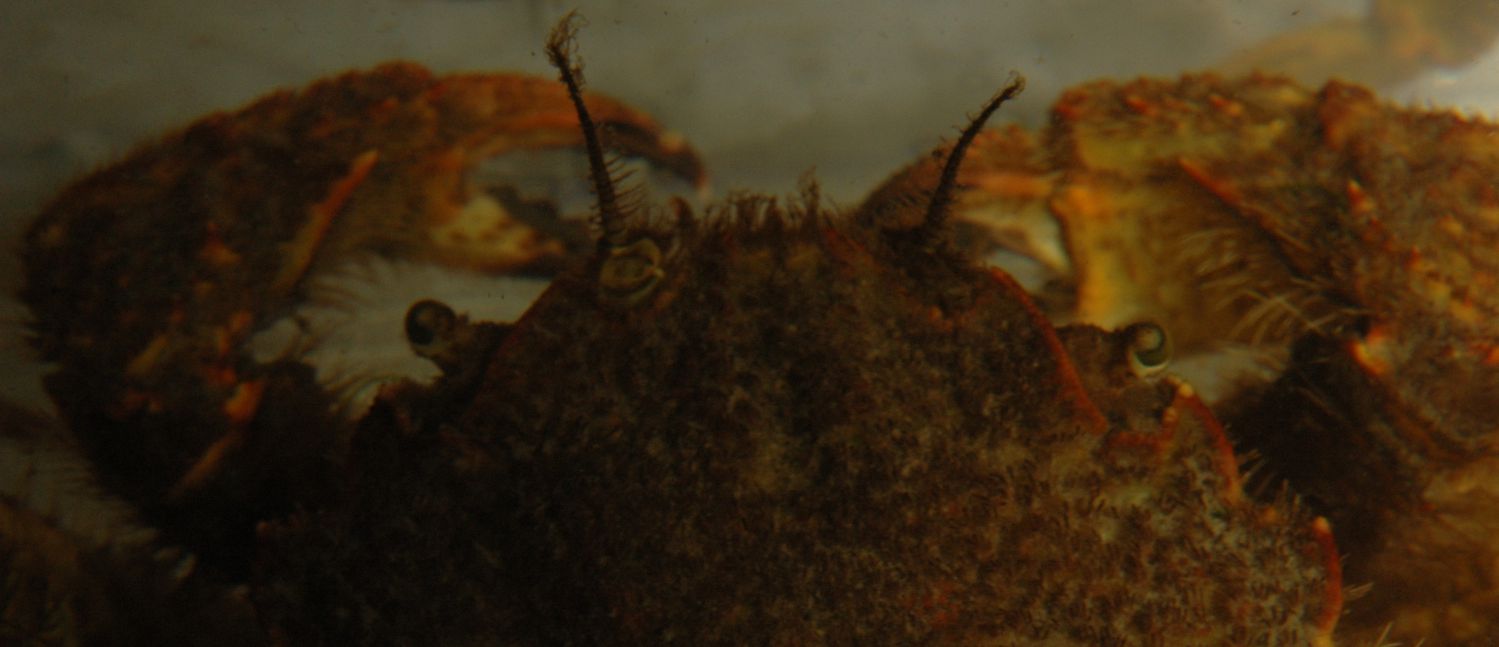
This species has no rostrum
but has four teeth between the eyes and six on the anterolateral margin
of the carapace.
It has many stiff setae.
Photo by Dave Cowles, July 2005
The carapace is double-toothed, with small teeth lining the anterior edge of the larger teeth. Setae are also stiff. Photo by Dave Cowles, June 2020
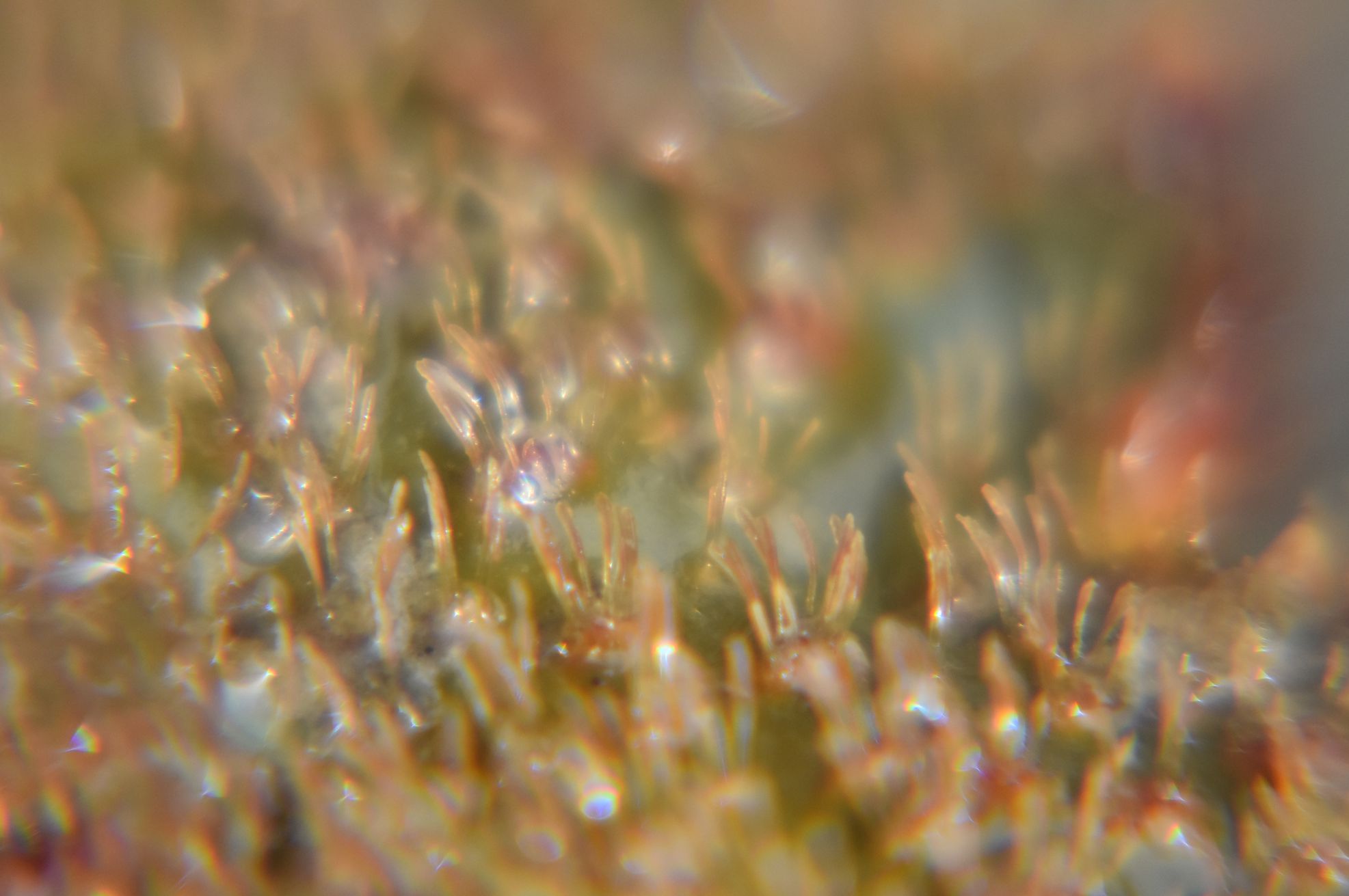
The setae
on the dorsal
surface of the carapace
are short, thick, and straplike or clublike. Photo by Dave Cowles, June
2020
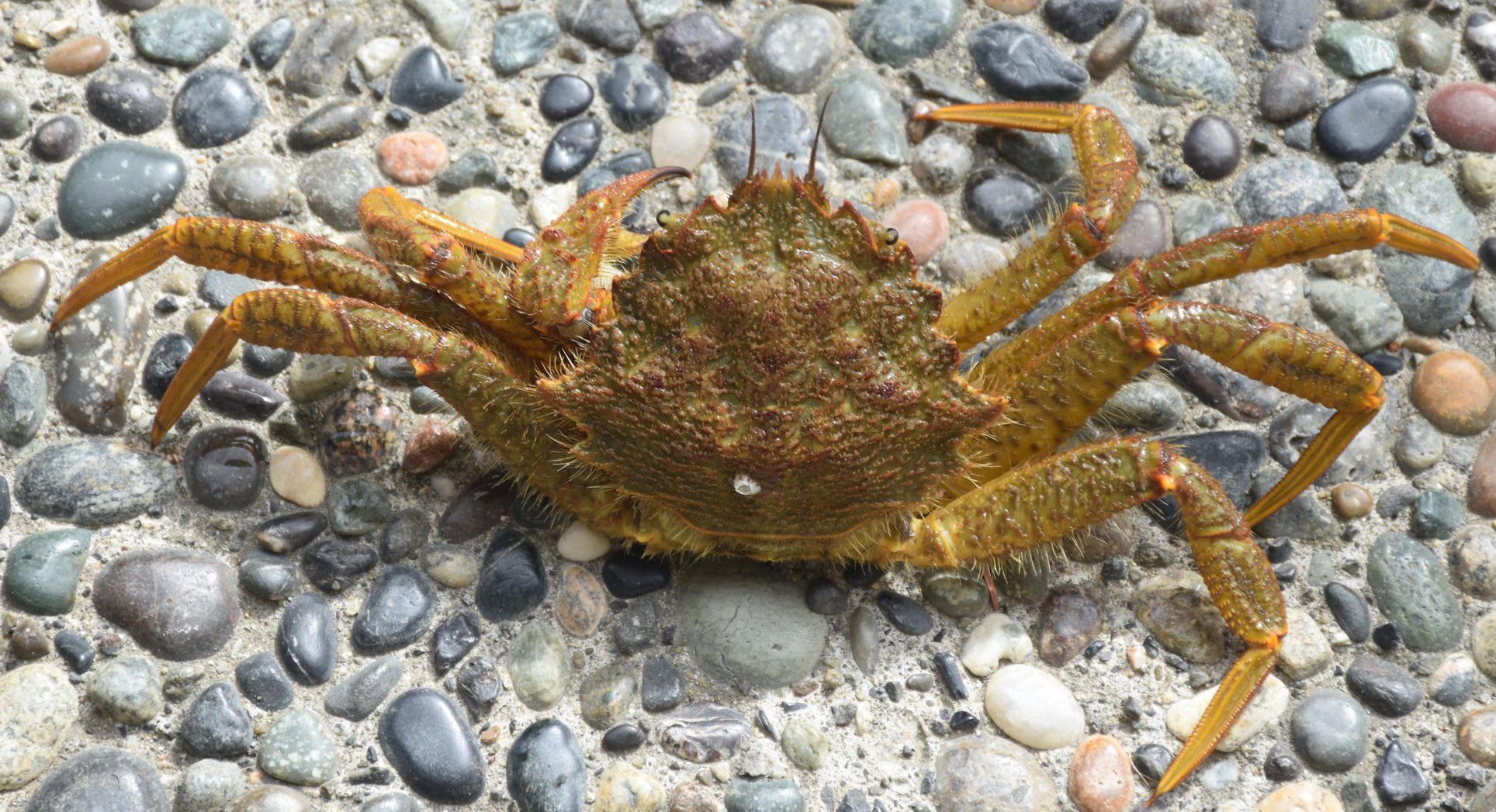
Another view of an adult. The carapace
width of this individual is 9.5 cm. It hasn't molted for a while and a
small barnacle has begun growing on its dorsal carapace.
Photo by Dave Cowles, June 2020
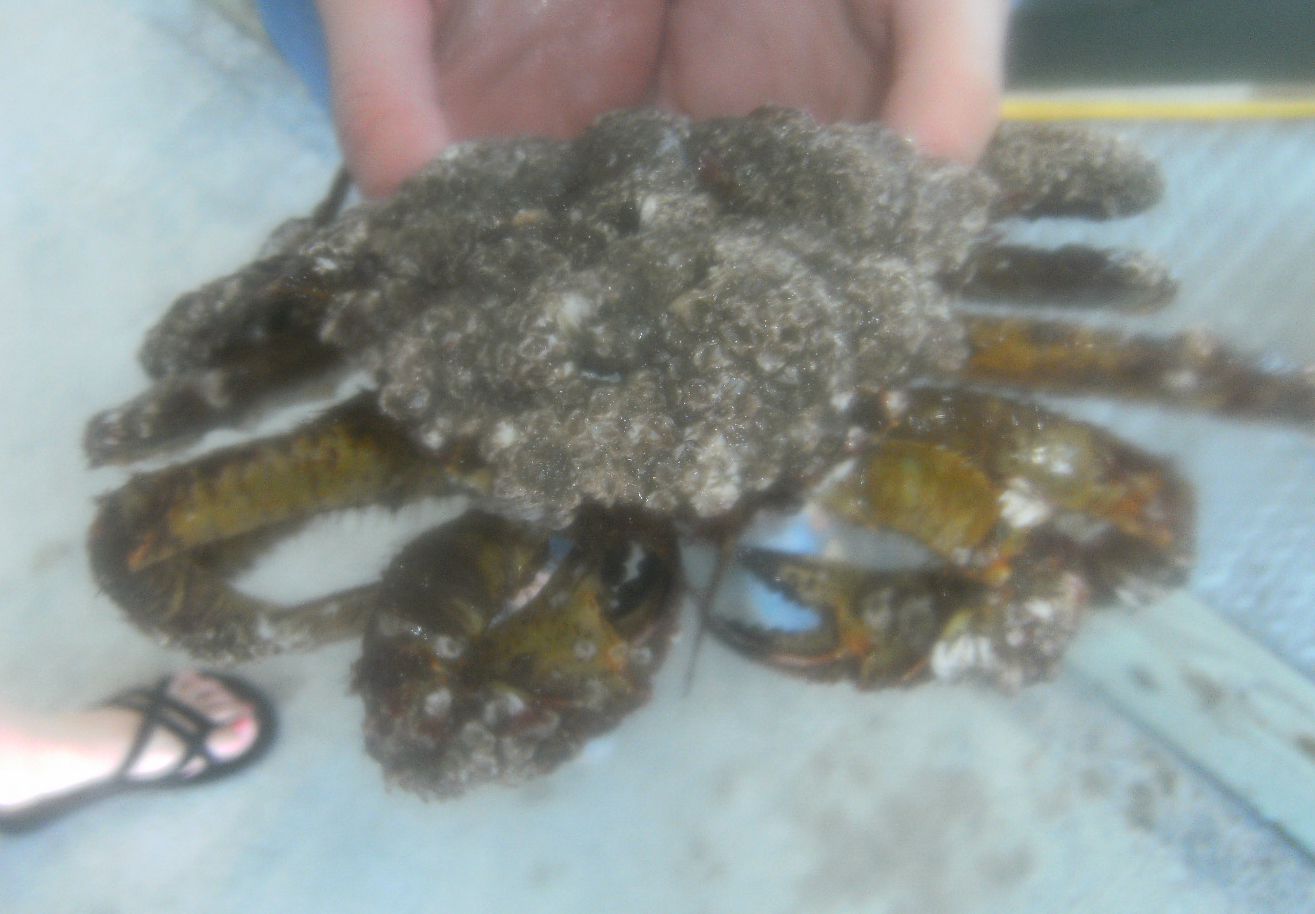
This individual from a dock in Anacortes is heavily encrusted with
barnacles. Some crabs have a terminal molt and, since they can't molt any
more, can become heavily encrusted with barnacles like this. Photo by Dave
Cowles, July 2014
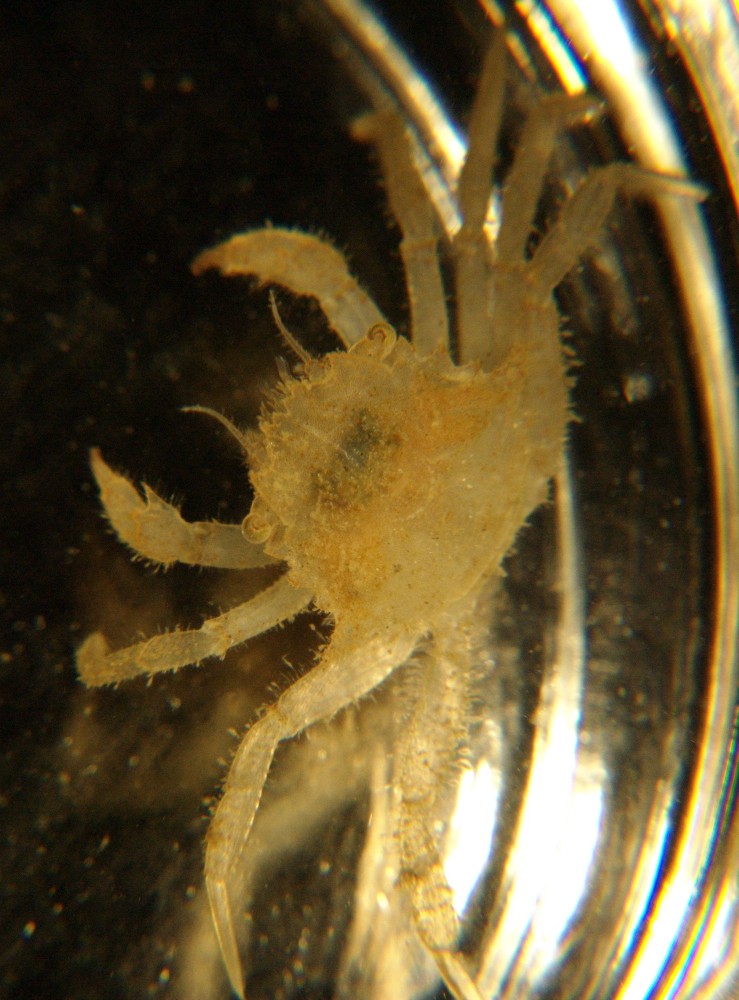
This juvenile has a carapace
width of 1.2 cm. Photographed by Dave Cowles at Rosario, July 2010.
Authors and Editors of Page:
Dave Cowles (2005): Created original page
